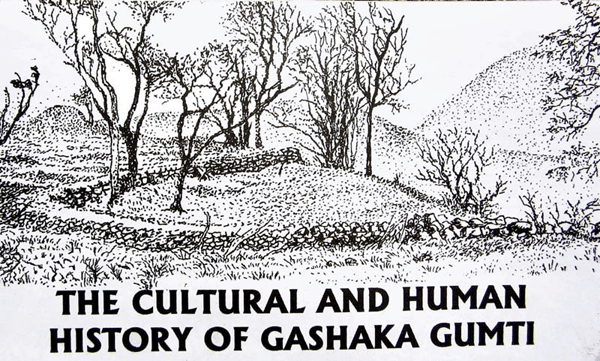
Ethnic History
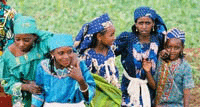
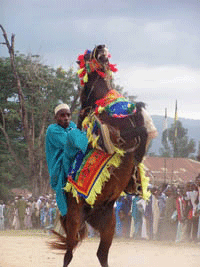
The ethnic history of the region can best be considered in terms of four more or less successive waves of immigration: first by the Jukun, and later by the Chamba, Bata and Fulani.
The Jukun tribe were, for a number of centuries, one of the great martial powers of the Nigerian hinterland, and their influence extended as far North as Kano and Bornu. This vigorous pagan empire, however, suffered the vicissitudes of fortune common to many Sudan states, and eventually crumbled away before the insidious advance of the Fulani, helped as ever by treachery from within.
Originally from Cameroon, the Chamba were driven out the Bata and fled, first, across the Faro River to the Atlantica Hills. Later on the Chamba split, one section spread along the hills to Mapeo, another South to coalesce with the Dakka of the Mumuye massif, while a third remained on the Eastern side of the plateau and fused with the Lekon.
The Bata invasion, before whose onset the Chamba retreated, originated in the Mandara Hills. They eventually settled at Demsa and occupied the surrounding lowlands becoming the most powerful tribe in the region. Gradually however they were driven westwards down by the Benue by the Fulani.
The most important and influential of these immigrations was that of the Fulani. Although Fulani first arrived in Nigeria around 1300 seeking pasture of their cattle, it was not until the eighteenth century that they came to occupy the region in any great numbers.
Fulani Jihad
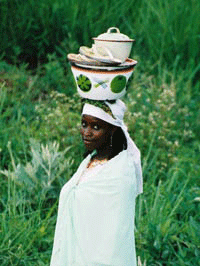
Early in the 19 th century a prominent religious leader, Usman dan Fodio, arose among the pastoral Fulani and declared a jihad, or holy war, against the surrounding heathen tribes. Later on, as this campaign grew in strength, a Fulani named Hamman Gabdo, also known as Hamman Dandi, received a mandate from the Emir of Yola, Modibbo Adama (Lamido Fumbina), to lead the jihad through the areas of Toungo, Koncha, Banyo and Gashaka (Koncho and Banyo are now in Cameroon). After a long struggle Hamman Gabdo finally overcame the pagans of Gashaka and established a sub-Emirate in the region with Gashaka as its headquarters. From here the jihad spread further onto the Mambilla plateau and on into Baissa. The Fulani never thoroughly conquered the region however, and succeeded only in those areas where their horsemen could operate effectively. The pagan tribes of the hills and more broken country managed to maintain their independence. Hamman Gabdo died in 1872 and his tomb may still be seen in Gashaka village.
The Effect of Such Upheavals
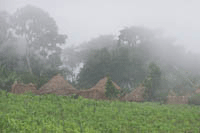
These violent upheavals resulted in a marked population decline within the region. Depredations of inter-tribal warfare combined with slave raiding by Northern Hausa-Fulani empires and Southern kingdoms prior to this century, greatly reduced the region's population and drove most of its survivors into the surrounding highlands and thick forests. These settlers cleared and burnt patches of forest for farming, partially creating the intricate and complex vegetation mosaic that is so characteristic of the park today. Old grinding stones and pieces of clay pottery are commonly found throughout large areas of the park suggesting that the region was more widely inhabited in former times than it is now.
The Colonial Struggle for Power and the German Occupation
The latter part of the 19 th century followed a period of great rivalry between the major colonial powers of the time (Britain, Germany, France). At this time, the region was finally invaded by the Germans from Bamenda. Initially, control was limited to about a dozen expeditions through the region by German officers. Only much later, as the First World War approached, was any consolidation of the administration attempted. The Gashaka area was made a division of its own with headquarters at Garbabi, breaking the established link with Yola. During their brief occupation the Germans built a network of roads and trails across the region, many of which are still used today either as footpaths or as seasonal roads.
The First World War and Subsequent Changes
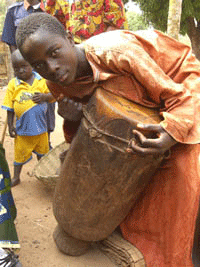
The 1914-18 war impinged heavily on the region since Yola was only 30 miles away from the German strongpoint at Garoua whose territory ran along the whole Eastern frontier. Only after some fierce fighting and heavy losses were the Germans finally driven out. At the end of the First World War Germany lost control of Cameroon. This area was mandated to the British by the League of Nations as a Trust Territory and Gashaka District was re-established under the Adamawa Native Authority and the Yola Emirate. The Emir (Lamido) of Yola resumed control and sent his representatives to supervise the district.
The first representative, Masaya, ruled the region administratively from Mayo Ndaga in the highlands and Gashaka in the lowlands. However, the second representative, Dan Lawan, changed this arrangement in 1940 dividing the area into 2 districts: Gashaka and Mambilla. Serti and Gembu became the administrative centres and with this change the influence of Gashaka village was over.
Recent History
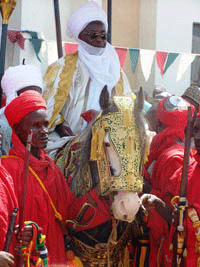
From 1940 onwards the area has been ruled by two chiefs. The present chiefs of Mambilla (Gembu) and Gashaka (Serti) districts are both sons of former Gashaka village chiefs. The present chief of Gashaka district, Alhaji Hamman Gabdo Mohammadu Sambo, son of Mohammadu Sambo who ruled Gashaka village 1940-65, is also the current Chairman of Gashaka-Gumti National Park Management Committee.
A plebiscite was held in 1961 when the people of the Cameroon Trust Territory were asked to choose whether to join the Nigerian Federation or the Cameroon Republic. The Northern Cameroonians voted to join Nigeria resulting in the establishment of Sardauna Province.
Ethnic Composition of Gashaka-Gumti
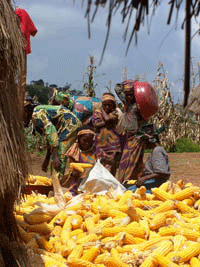
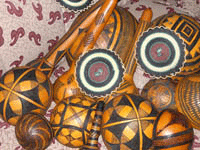
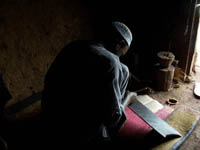
Among the many heterogeneous tribes of the region it is unlikely that any represents the original inhabitants, for all of them have traditions of migrations from other lands. In recent times many groups that had fled into the surrounding hills for safety have since returned to the more fertile plains. Movements into the area have become a notable feature with concentrations of population forming along the recently improved main roads: primarily Fulani-Hausa settlers from the North, and Tivs pressing up the Benue valley from the South-west.
Today the Gashaka-Gumti region is characterised by a considerable diversity of ethnic cultures. The ethnic groups in the Southern or Gashaka sector of the park are dominated by the Jibu, Dakka, Ndoro, Tigon, Gbaya, Tiv, Mambilla, Kaka, and Fulani; whilst the tribes in the Northern or Toungo region include the Chamba, Kutim, Potopore, Fulani, Dakka, Nyamnyam and Kona.
Together with the Jibu, the Chamba represent the most important tribal groups surrounding the park. Linguistically there are two groups of Chamba. Some of the Adamawa Chamba, such as the Lekon tribe of Toungo, can be classified with the main Donga group, but those of Dakka, Sugu, and Nassarawo form a second different group, known as the Nyakanyare. The Chamba do not constitute a single tribal unit for they are found living in scattered groups over a very large area. This dispersal was due firstly to the attacks of the Bata, and later to those of the Fulani during the early decades of the last century.
The origin of the Fulani remains controversial. One claim is that they are of the same Polynesian stock that colonised Madagascar; another connects them with the gypsies of Europe and traces both races back to a common Indian origin: while a third imaginatively relates them to the Hyksos or Shepherd Kings who were expelled from Egypt around 1630 B.C.
Ndoro are found in many villages on the Southern boundary of the park. Originally from the rainforests of the Baissa area further South, they still practise shifting cultivation and remain keen hunters.
Originally from the rainforests of the Central African Republic, Gbaya only arrived within the last century via Cameroon. Gbaya culture emphasises hunting and gathering although farming, pottery, basketry and mat weaving are also important.
